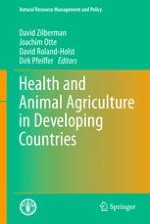2012 | OriginalPaper | Buchkapitel
7. Border Inspection and Trade Diversion: Risk Reduction vs. Risk Substitution
verfasst von : Qiong Wang, Eli P. Fenichel, Charles A. Perrings
Erschienen in: Health and Animal Agriculture in Developing Countries
Verlag: Springer New York
Aktivieren Sie unsere intelligente Suche, um passende Fachinhalte oder Patente zu finden.
Wählen Sie Textabschnitte aus um mit Künstlicher Intelligenz passenden Patente zu finden. powered by
Markieren Sie Textabschnitte, um KI-gestützt weitere passende Inhalte zu finden. powered by
